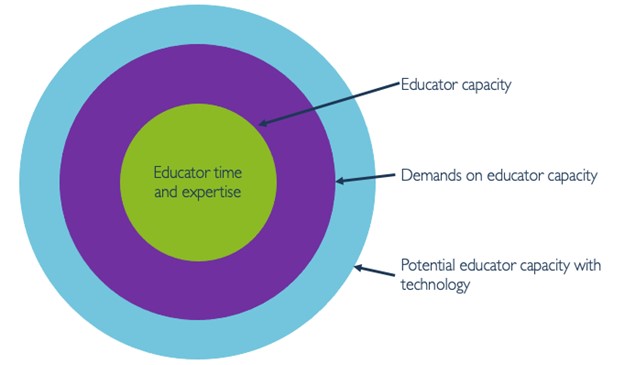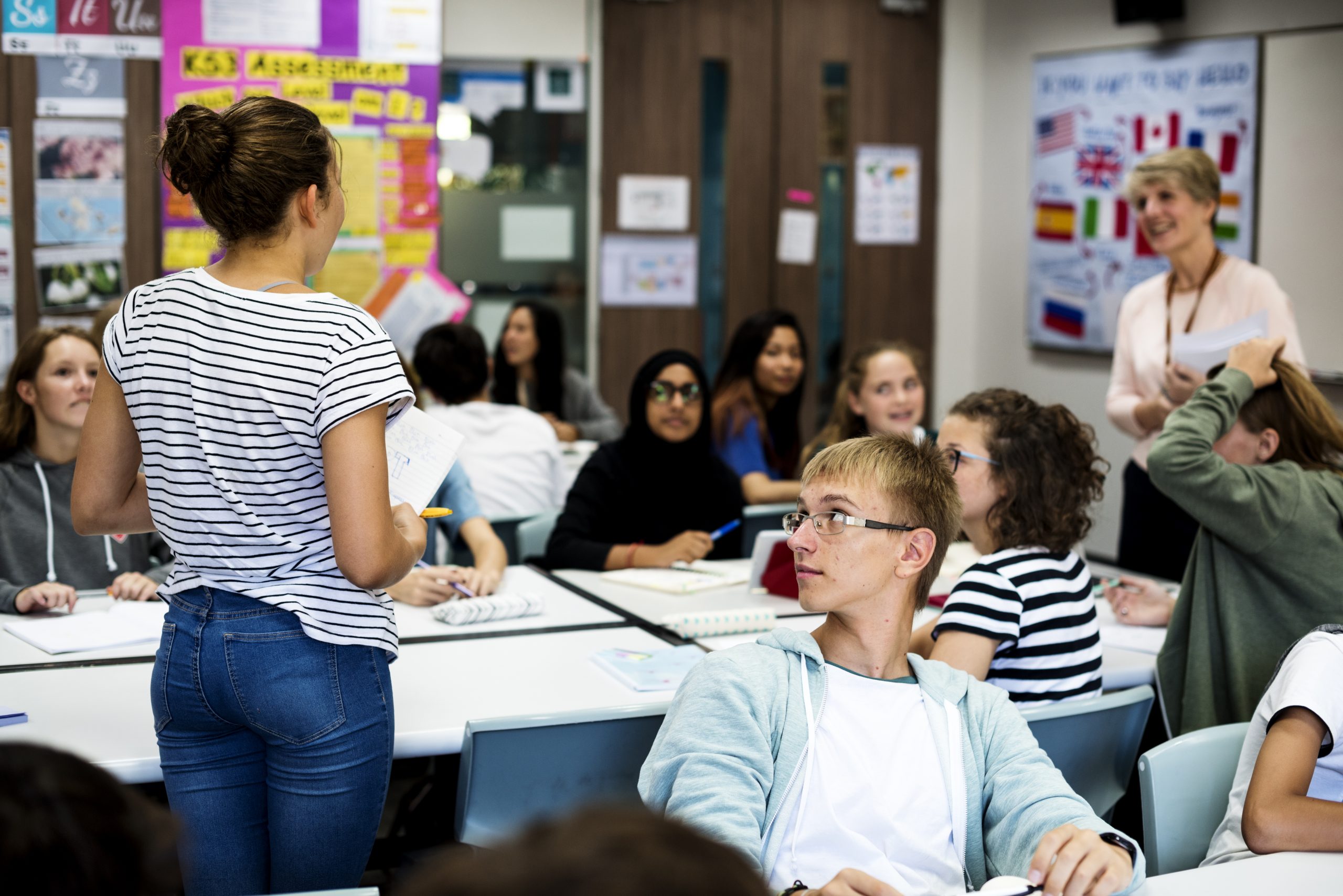K–12 schools and districts across the country are experiencing teacher shortages and receiving reports of teacher burnout in record numbers. According to recent RAND Corp. research, nearly one in four teachers said that they were likely to leave their jobs by the end of the 2020–2021 school year due to increased job-related stress. The troubling data also revealed that not only are the levels of stress so high that many teachers who quit took jobs that paid less, but that one of the major contributors to teacher-experienced stress was “mode of instruction” (i.e. pandemic-era teaching conditions).
“I am terrified, as a veteran teacher (16 years), that the expectations placed on us as teachers during this time will continue post-pandemic,” said one teacher in our recent survey this spring. “We cannot continue in this manner—too much to plan/do/create/etc., with no time in which to do it, much less do it effectively.”
If we had to account for demands on teacher time similar to how we account for school budgets, we’d be forced to confront a punishing reality: most schools are bankrupt. The pandemic and decades of new policies, best practices, and rising expectations have saddled teachers with responsibilities that go well beyond the hours in a day. This means we can’t surmount challenges in education by just asking teachers to do more or work harder.
As I’ve said many times before, teachers remain the most critical component in a student’s education, which became abundantly clear when, during makeshift remote learning last year that abruptly separated students from their teachers, many students reported feelings of disengagement, depression, and difficulties keeping up with their work. Now more than ever, teachers should be given the critical support they’re asking for in the classroom.
Technology that can help, rather than hinder
Thanks to the (for the most part) hastily implemented online learning last year, some may be quick to cast off edtech as a hindrance to teachers. But as many schools learned through their pandemic experience, being thoughtful about the real benefits and potential drawbacks of any technology is critical to success, such as whether the benefits outweigh the costs of adoption and implementation.
But when selected and implemented strategically, edtech allows teachers the capacity they desperately need and deserve to focus on instruction that can accelerate learning and spend time building supportive relationships with their students. In other words, edtech used efficiently can help teachers use their time, attention, and energy in new ways to make a bigger difference for their students.

There are two potential ways technology can amplify teacher capacity and, in turn, hopefully, reduce stress:
1. Enhancing teachers’ effectiveness. Enhancement comes in two forms. In one vein, technologies accelerate teachers’ work by helping them do that work more efficiently. For example, Google Classroom can help teachers hand out, collect, and grade assignments in less time than it takes to do those same activities by hand. In the other vein, technology can completely automate tasks so that teachers can take those tasks off their plates. For example, teachers use software like Khan Academy or iReady to automate some of the work of explaining concepts, serving up practice problems, and providing feedback.
2. Enabling teachers to use new approaches in their work that were impossible or impractical previously. For example, technologies like Lexia Core 5 enable teachers to take daily snapshots of students’ learning and give students targeted instruction in ways that are almost unfeasible for a teacher to do manually at scale on a daily basis. Similarly, technologies designed to foster students’ relationships give teachers a way to connect students with mentors, tutors, and advisors—work that is otherwise too time-consuming to coordinate.
Importantly, some technologies “enable” indirectly through “enhancement.” When technology can cut back the time teachers have to spend on one type of activity, it frees up teachers’ time for other valuable activities. For example, when technologies for writing instruction, such as ecree or NoRedInk, provide automated feedback on the grammar and structure of students’ essays, teachers can focus more of their feedback to students on other important elements of quality writing, such as reasoning, rhetoric, and style. Similarly, math instructional technologies like Khan Academy give teachers a manageable way to implement mastery-based instruction, a strategy that is hard to coordinate at scale otherwise.
When implemented thoughtfully and strategically, technology has the potential to relieve the stress related to many teachers’ “mode of instruction” by expanding their capacity in the classroom, allowing them both the time and the tools to make a significant, positive impact in each of their students’ lives. And though I can’t be 100% sure, as a former teacher I suspect that sustainable workloads and greater capacity to make a difference in students’ lives are more valuable than a signing bonus when it comes to keeping teachers on the job.


